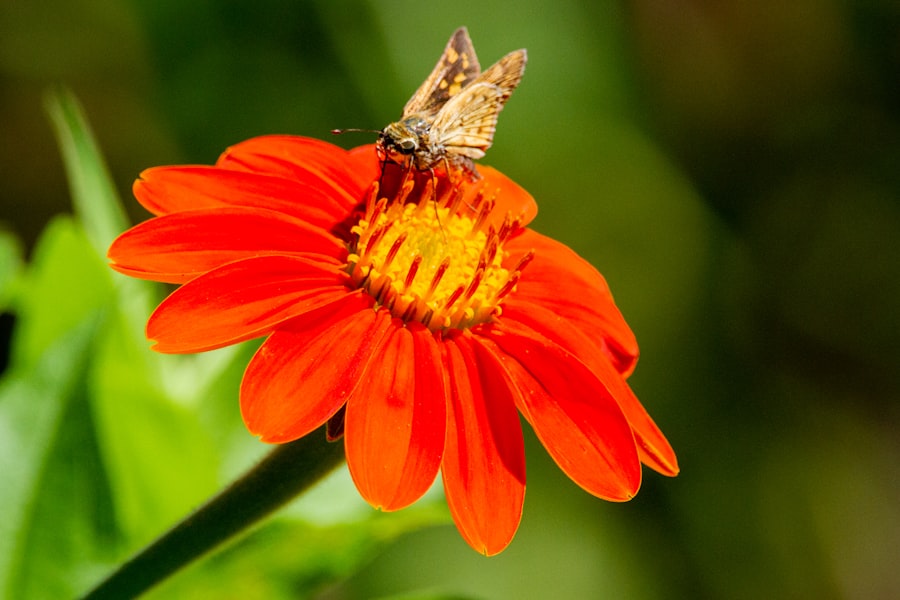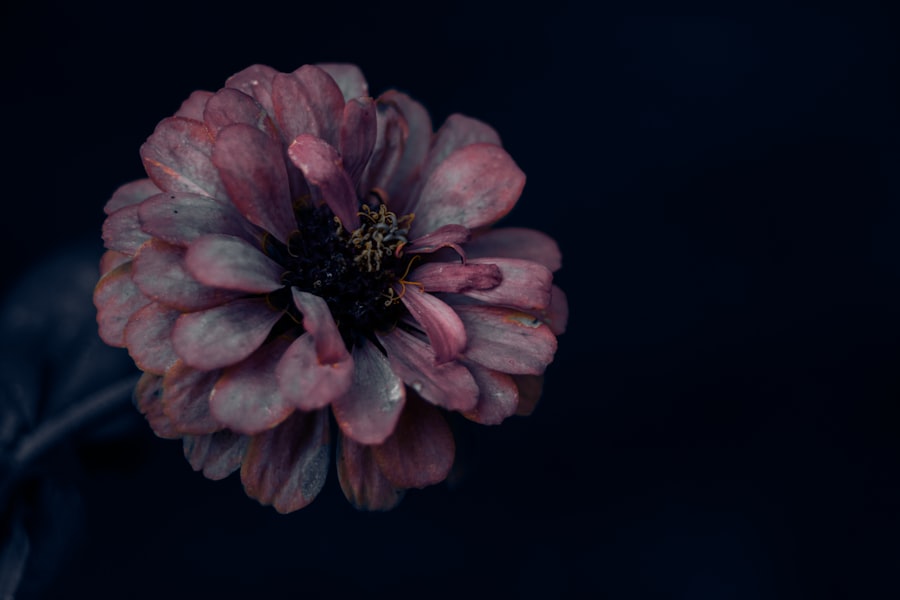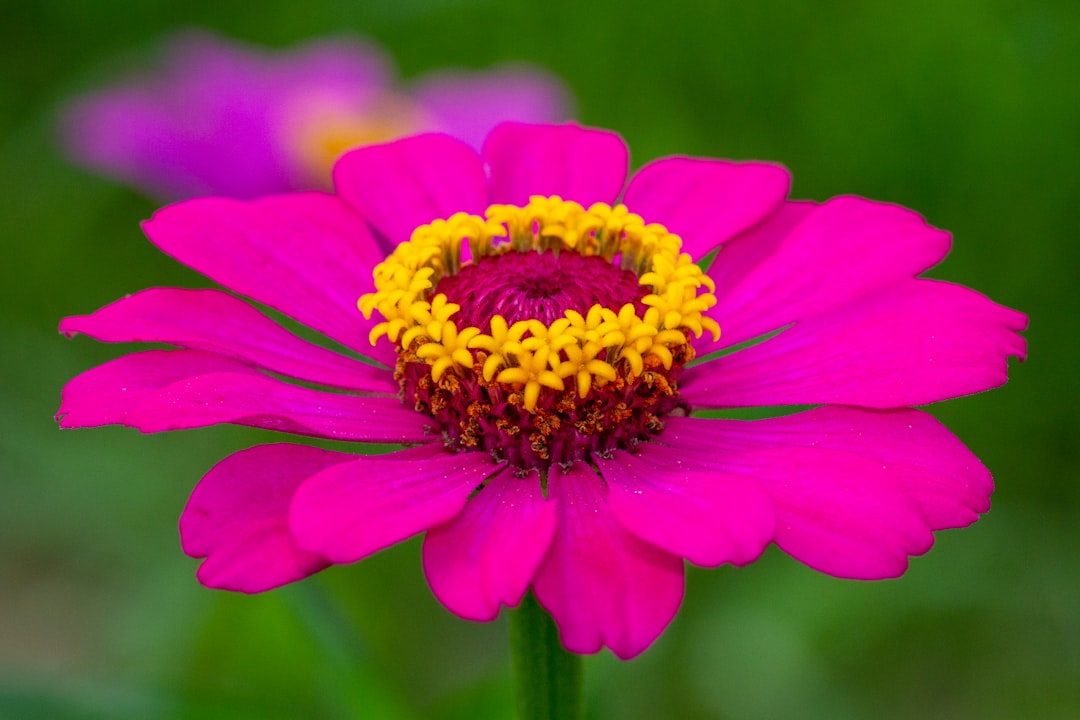Zinnia seeds are tiny treasures that hold the promise of vibrant blooms and a splash of color in any garden. These seeds come from the zinnia flower, a member of the Asteraceae family, which is known for its bright, daisy-like petals and sturdy stems. Zinnias are not only beautiful but also incredibly easy to grow, making them a favorite among both novice and experienced gardeners.
They thrive in a variety of conditions and can bring joy to your garden from summer through fall, attracting butterflies and bees along the way. When you look at zinnia seeds, you might notice their small, flat shape and dark color. Each seed is a potential flower, waiting for the right conditions to sprout and flourish.
Understanding the nature of these seeds is essential for successful planting. They require warmth, sunlight, and well-drained soil to germinate effectively. With a little care and attention, you can transform these humble seeds into a stunning display of color that will brighten your outdoor space.
Key Takeaways
- Zinnia seeds are easy to grow and come in a variety of colors and sizes, making them a popular choice for gardeners.
- The best time to sow zinnia seeds is after the last frost date in your area, typically in the spring.
- Factors to consider before planting zinnia seeds include the location of the planting site, soil quality, and sunlight exposure.
- When preparing the soil for zinnia seed planting, make sure it is well-draining and has been amended with organic matter.
- Sowing zinnia seeds indoors allows for better control of temperature and moisture, leading to higher germination rates.
Choosing the Right Time to Sow Zinnia Seeds
Timing is crucial when it comes to sowing zinnia seeds. These flowers thrive in warm weather, so it’s best to plant them after the last frost has passed. In most regions, this means waiting until late spring or early summer.
The ideal soil temperature for zinnia seeds to germinate is around 70°F to 75°F (21°C to 24°C). If you plant them too early, the cold soil can hinder their growth, while planting too late may not give them enough time to bloom before the first frost of fall. If you’re eager to get started, consider starting zinnia seeds indoors about 4 to 6 weeks before the last expected frost date in your area.
This way, you can give your plants a head start and ensure they are ready to thrive once they are transplanted outdoors. Keep an eye on local weather forecasts and soil temperatures to determine the best time for sowing your zinnia seeds.
Factors to Consider Before Planting Zinnia Seeds

Before you dive into planting zinnia seeds, there are several factors to consider that can significantly impact their growth. First and foremost is the location of your garden. Zinnias love full sun, so choose a spot that receives at least six hours of direct sunlight each day.
This will help them grow strong and produce abundant flowers. Additionally, consider the type of soil in your garden. Zinnias prefer well-drained soil that is rich in organic matter.
If your soil is heavy clay or sandy, you may need to amend it with compost or other organic materials to improve drainage and fertility. Another important factor is spacing. Zinnias can grow quite large, depending on the variety, so it’s essential to give them enough room to spread out.
Generally, you should space zinnia plants about 12 to 18 inches apart. This allows for good air circulation, which helps prevent diseases and promotes healthy growth. Lastly, think about the variety of zinnia you want to grow.
There are many types available, ranging from dwarf varieties perfect for borders to tall varieties that make stunning cut flowers. Choose a variety that suits your garden’s aesthetic and your personal preferences.
Preparing the Soil for Zinnia Seed Planting
| Soil Preparation Metrics | Values |
|---|---|
| Soil pH | 6.0-7.5 |
| Soil Temperature | 70-75°F |
| Organic Matter Content | 3-5% |
| Soil Moisture | Moist, not waterlogged |
| Soil Texture | Well-draining loam |
Preparing the soil is a vital step in ensuring your zinnias thrive. Start by clearing the area of any weeds or debris that could compete with your seedlings for nutrients and water. Once the area is clean, loosen the soil using a garden fork or tiller to a depth of about 12 inches.
This aeration helps improve drainage and allows roots to penetrate more easily. Next, enrich the soil with organic matter such as compost or well-rotted manure. This not only provides essential nutrients but also improves soil structure and moisture retention.
Aim for a balanced mix of sand, silt, and clay for optimal drainage while still retaining some moisture. After mixing in the organic matter, level the soil with a rake and create small furrows or rows where you will sow your zinnia seeds. This preparation will set a solid foundation for your plants as they begin their journey from seed to bloom.
Sowing Zinnia Seeds Indoors
If you choose to start your zinnia seeds indoors, it’s a straightforward process that can yield great results. Begin by selecting seed trays or small pots filled with seed-starting mix—this lightweight medium provides excellent drainage and aeration for young seedlings. Moisten the mix before sowing to ensure it’s damp but not soggy.
Sow the zinnia seeds about ¼ inch deep in the soil and cover them lightly with more mix. Space the seeds according to the variety you’re planting; larger varieties may need more room than dwarf types. After sowing, gently water the trays using a spray bottle or watering can with a fine nozzle to avoid displacing the seeds.
Place the trays in a warm location with plenty of light—ideally under grow lights or near a sunny window—to encourage germination. Keep an eye on moisture levels as your seeds begin to sprout; they should be kept consistently moist but not waterlogged. Once seedlings emerge, thin them out if necessary, leaving only the strongest plants in each pot.
This will help ensure that each seedling has enough space and resources to grow healthy and strong.
Sowing Zinnia Seeds Outdoors

Sowing zinnia seeds outdoors is an exciting step that connects you directly with nature. Once you’ve determined that the weather is warm enough and all danger of frost has passed, it’s time to plant those seeds in your garden bed or designated area. Begin by preparing the soil as previously discussed—removing weeds, loosening it up, and enriching it with organic matter.
When you’re ready to sow, create shallow furrows in the soil about 12 inches apart for larger varieties or closer together for dwarf types. Scatter the zinnia seeds evenly along the furrows at a depth of about ¼ inch, then cover them lightly with soil. Gently pat down the soil to ensure good contact between the seeds and their new home.
After sowing, water the area thoroughly but gently to avoid washing away the seeds. It’s essential to keep the soil consistently moist during germination, which typically takes about 7 to 10 days under ideal conditions. As your zinnias begin to sprout, be sure to monitor their growth and provide additional water if needed during dry spells.
Caring for Zinnia Seedlings
Once your zinnia seedlings have emerged, they require some tender loving care to thrive. Watering is crucial during this stage; ensure that they receive adequate moisture without becoming waterlogged. A good rule of thumb is to water deeply but less frequently—this encourages deep root growth and helps establish strong plants.
Fertilizing your zinnias can also promote healthy growth and vibrant blooms. Use a balanced fertilizer every few weeks during their active growing season, following package instructions for application rates. Additionally, keep an eye out for weeds that may compete with your seedlings for nutrients and water; regular weeding will help maintain a healthy environment for your zinnias.
As your seedlings grow taller, consider providing support if necessary—especially for taller varieties that may become top-heavy as they bloom. You can use stakes or cages to help keep them upright and prevent breakage from wind or rain.
Transplanting Zinnia Seedlings
Transplanting zinnia seedlings is an exciting milestone in their growth journey! When your seedlings have developed several sets of true leaves and are about 3-4 inches tall, it’s time to move them outdoors if they were started indoors. Before transplanting, harden off your seedlings by gradually exposing them to outdoor conditions over a week or two.
When transplanting, choose a cloudy day or late afternoon when temperatures are cooler to minimize stress on the plants. Dig holes in your prepared garden bed that are slightly larger than the root ball of each seedling.
Carefully remove each seedling from its pot by gently squeezing the sides or using a small tool if needed—be cautious not to damage the roots. Place each seedling in its new hole at the same depth it was growing in its pot and backfill with soil, gently pressing down around the base to eliminate air pockets.
Protecting Zinnia Seedlings from Pests and Diseases
As with any garden plant, zinnias can be susceptible to pests and diseases if not properly cared for. Common pests include aphids, spider mites, and whiteflies, which can damage leaves and stunt growth if left unchecked. Regularly inspect your plants for signs of infestation—look for discolored leaves or visible insects on stems and undersides of leaves.
If you notice pests, consider using insecticidal soap or neem oil as an organic solution to control them without harming beneficial insects like bees and ladybugs. Additionally, maintaining good air circulation around your plants by spacing them appropriately can help prevent fungal diseases such as powdery mildew. Another preventive measure is practicing crop rotation if you’re planting zinnias year after year in the same area; this helps reduce disease buildup in the soil over time.
Keeping your garden clean by removing dead plant material at the end of each season also minimizes disease risk.
Tips for Successful Zinnia Seed Planting
To ensure success with your zinnia planting endeavors, here are some helpful tips that can make all the difference! First, always choose high-quality seeds from reputable sources; this increases your chances of healthy germination and robust plants. Additionally, consider planting a mix of different zinnia varieties for a stunning display of colors and shapes throughout your garden.
Regular maintenance is key—stay consistent with watering, weeding, and fertilizing as needed throughout the growing season. Don’t forget about deadheading spent blooms; this encourages more flowers to form while keeping your plants looking tidy. Lastly, embrace patience!
Gardening is a journey filled with learning experiences; not every seed will sprout perfectly or every plant thrive as expected. Enjoy watching your zinnias grow and bloom while appreciating nature’s beauty along the way.
Harvesting Zinnia Seeds for Future Planting
Once your zinnias have finished blooming and their petals have fallen away, it’s time to think about harvesting seeds for future planting! Allow some flowers to remain on the plant until they dry out completely; this usually occurs in late summer or early fall when temperatures begin to cool down. When harvesting seeds, carefully cut off dried flower heads using scissors or pruning shears—make sure they are fully dry before doing so!
Place these heads in a paper bag or container where they can continue drying for several days if needed. Once fully dried, gently crush the flower heads between your fingers to release the seeds inside—be sure to collect them carefully so they don’t scatter away! Store harvested seeds in a cool, dry place in labeled envelopes or containers until you’re ready to plant them next season.
FAQ Section 1. How long does it take for zinnia seeds to germinate?
Zinnia seeds typically take about 7-10 days to germinate under ideal conditions when planted at proper soil temperatures. 2.
Can I grow zinnias in containers?
Yes! Zinnias can thrive in containers as long as they have enough space for their roots and receive adequate sunlight. 3.
What should I do if my zinnias are not blooming?
If your zinnias aren’t blooming well, check if they’re receiving enough sunlight (at least six hours daily) and ensure they’re not overcrowded by other plants. 4. How often should I water my zinnias?
Water zinnias deeply but less frequently; aim for about once a week unless there are prolonged dry spells when more frequent watering may be necessary.
5. Are zinnias annuals or perennials?
Zinnias are generally grown as annuals; however, they can self-seed in favorable conditions and return in subsequent years if allowed to do so. 6.
Can I save zinnia seeds from hybrid varieties?
While you can save seeds from hybrid zinnias, keep in mind that they may not produce plants identical to their parent due to genetic variability. 7. What colors do zinnias come in?
Zinnias come in an array of colors including red, orange, yellow, pink, purple, white, and even bi-colored varieties—making them perfect for adding vibrancy to any garden!
If you are looking for more gardening tips, you may also be interested in learning about how to harvest parsley. This article provides a complete guide on when and how to harvest parsley, ensuring that you get the most out of your herb garden.
FAQs
What are zinnia seeds?
Zinnia seeds are the small, dry seeds of the zinnia flower, which is a popular annual plant known for its bright and colorful blooms.
When is the best time to plant zinnia seeds?
The best time to plant zinnia seeds is after the last frost date in your area, typically in the spring. Zinnias thrive in warm weather and need plenty of sunlight to grow.
How do I plant zinnia seeds?
Zinnia seeds can be planted directly into the soil or started indoors and then transplanted outside. They should be planted about ¼ inch deep and spaced 6-18 inches apart, depending on the variety.
What type of soil do zinnia seeds need?
Zinnia seeds prefer well-draining soil with a pH level of 5.5 to 7.5. They can tolerate a variety of soil types, but they do best in fertile, loamy soil.
How long does it take for zinnia seeds to germinate?
Zinnia seeds typically germinate within 4-7 days when planted in warm soil. However, germination time can vary depending on the specific variety of zinnia and environmental conditions.
How often should I water zinnia seeds?
Zinnia seeds should be watered regularly, keeping the soil consistently moist but not waterlogged. Once the plants are established, they are somewhat drought tolerant and can handle dry periods.
When will zinnia seeds start to bloom?
Zinnia seeds will typically start to bloom 60-70 days after planting, depending on the variety. Once they start blooming, they will continue to produce flowers throughout the growing season.

